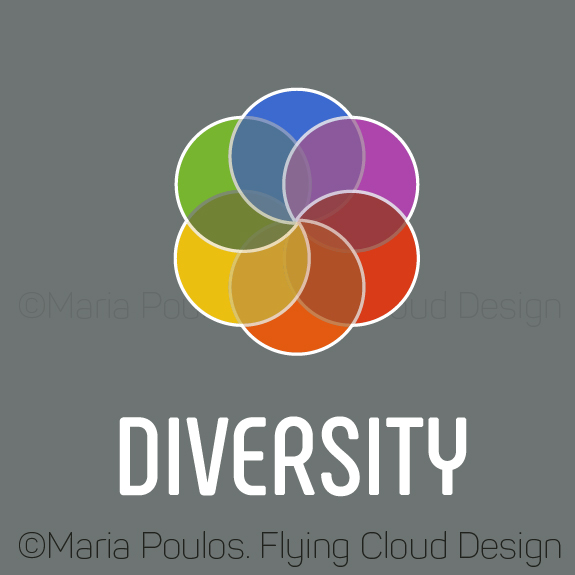The concept of cultural diversity, as embodied in logos and symbolic art, serves not merely as a visual representation but as a conduit for deeper societal narratives. In an increasingly globalized world, the need to celebrate multiculturalism and inclusivity has become more pertinent. A culture is much more than an ensemble of beliefs and practices; it represents a kaleidoscope of identities, values, and worldviews that coalesce to form the fabric of society.
Logos that focus on cultural diversity often reflect a myriad of elements. They may incorporate various shades and colors, illustrating the multitude of perspectives and traditions that coexist within a community. The use of diverse and vibrant colors serves as an artistic metaphor for harmony amidst variation, suggesting that differences can coexist and even thrive together. This observation hints at a deeper fascination with unity—a desire to foster collaboration among disparate cultures.
Moreover, the intricate design of cultural diversity logos frequently employs symbols that hold significance across different ethnic backgrounds. For example, circular shapes may signify wholeness and unity, while interlocking patterns can represent the interconnectedness of humanity. Such design choices provoke contemplation. They compel observers to consider not just aesthetic beauty but the more profound implications of inclusivity and understanding.
The fascination with cultural logos is compounded by their potential for storytelling. Each hue and shape may correspond to historical narratives, folklore, and collective memories of communities. Logos can become emblematic of cultural identity, evoking a deep sense of pride within individuals and collectives. Consequently, these images transcend superficial design, evolving into vessels that carry the weight of history and hope for future generations.
It is critical to address the common observation that cultural diversity logos often face scrutiny regarding authenticity. The balance of representation in designs can sometimes result in accusations of tokenism, where particular cultural symbols are used without genuine acknowledgment of their origins or meanings. This raises essential questions about appropriation versus appreciation. In essence, it challenges creators to navigate cultural sensitivities with respect and thoughtfulness.
Furthermore, the fixation with cultural diversity in branding has implications for consumer behavior and marketing strategies. Businesses that adopt inclusive logos often appeal to broader demographics, tapping into a shared desire for representation. By aligning themselves with social values, companies can enhance their brand loyalty while contributing to an ongoing dialogue about representation in society. However, the commercialization of cultural symbols also warrants scrutiny—it raises the question of whether these entities prioritize profit over genuine advocacy for diversity.
As culture incessantly evolves, so too do the connotations associated with logos of cultural diversity. They encapsulate the shifting paradigms surrounding race, ethnicity, and identity within the contemporary landscape. Consequently, there is a growing responsibility for designers and corporations alike to educate themselves about the significance of the elements they incorporate. There can be no genuine appreciation or endorsement of cultural diversity if the representations are devoid of understanding and respect.
In addition to their implications for brand identity and marketing, cultural diversity logos can serve as catalysts for social change. They can encapsulate expressions of resistance and resilience among marginalized groups. Activism often utilizes symbols to galvanize communities, spark movements, and catalyze public awareness—a logo that embraces cultural plurality can embody aspirations for equity and justice. When such symbols are disseminated widely, they can empower individuals, fostering a sense of belonging while calling attention to systemic inequalities.
In essence, the pursuit of cultural diversity is not merely a fashionable endeavor; it is a requisite for progress in an interconnected age. These logos symbolize recognition and acceptance of multifaceted identities, serving as a beacon for ongoing dialogue and inclusivity. The profound allure of cultural diversity logos lies not only in their striking visuals but their ability to challenge societal norms and inspire introspective conversations about identity, representation, and our shared future.
Ultimately, cultural diversity logos serve as a reminder that every individual contributes to the rich tapestry of society. They invite collective participation in understanding cultural nuances, thereby fostering appreciation rather than division. As the landscape continues to change, these designs will evolve, remaining steadfast in their capacity to convey messages of unity, understanding, and solidarity in diversity.
Thus, engaging with cultural diversity logos requires perseverance in understanding their context and significance. They could catalyze a more profound commitment to advocating for an inclusive society that respects all cultures. Every time we glance at these symbols, let it be a moment to reflect on our responsibilities—the responsibility to educate ourselves, to engage meaningfully with others, and to uphold values of diversity, equity, and inclusion.
